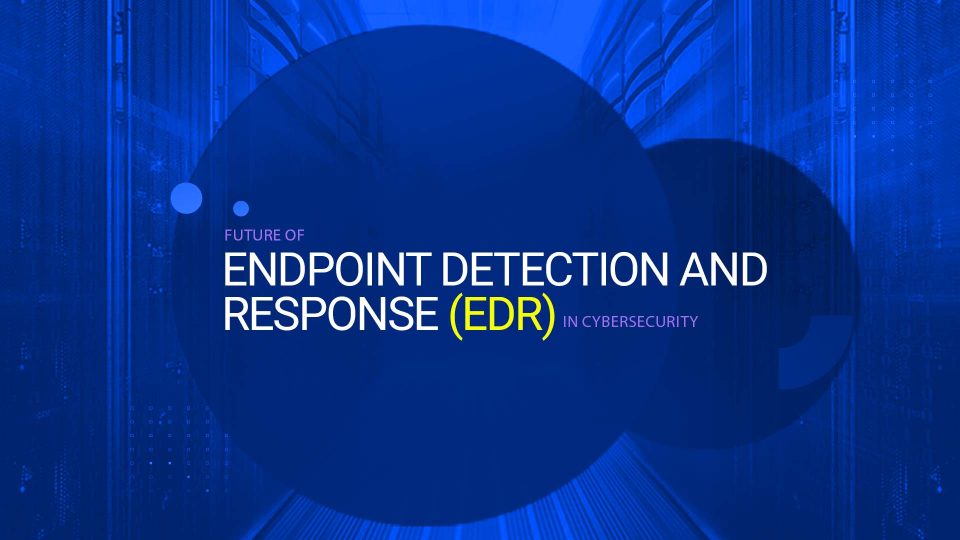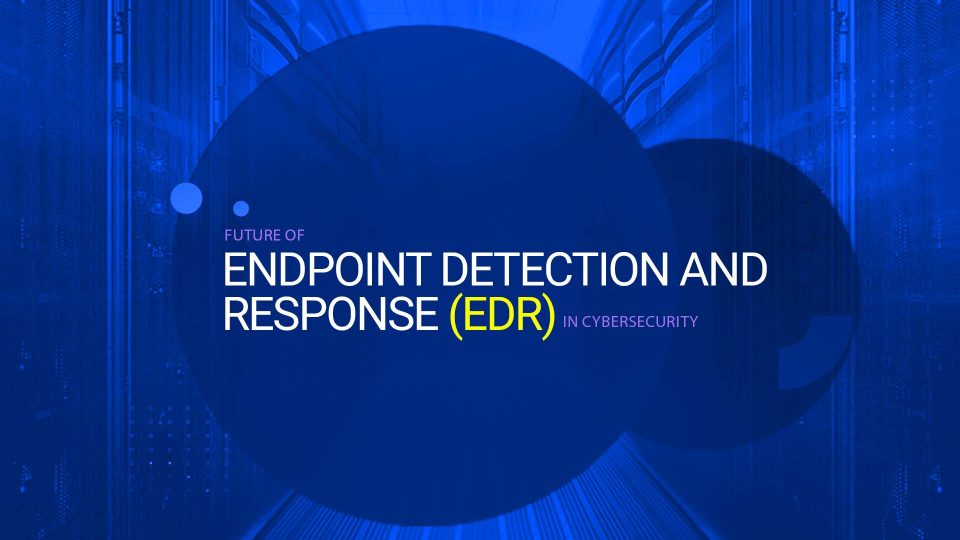
Gone are the days when basic antivirus software sufficed. Organizations are increasingly aware of advanced cyberattacks and demand a more robust defense. This is when Endpoint Detection and Response (EDR) comes in.
The rise of remote work has expanded the attack surface, with employees accessing networks from various devices and locations. EDR provides the essential visibility and control needed to secure these diverse endpoints. It goes beyond traditional defenses by:
- Detecting advanced threats: EDR can identify sophisticated malware, zero-day attacks, and persistent threats that might bypass legacy solutions.
- Offering real-time insights: EDR continuously monitors endpoints, providing immediate threat detection and allowing for swift response.
- Automating actions: EDR can automate responses to contain threats, minimizing damage and saving valuable time.
Despite its advantages, some organizations struggle with EDR implementation due to skilled personnel shortages, budget constraints, and integration complexities. According to Exactitiude Consultancy report, the market size of global Endpoint Detection & Response (EDR) is predicted to grow from USD 2.65 Billion in 2023 to USD 9.50 Billion by 2030, at a CAGR of 20% during the forecast period. The benefits of EDR are undeniable. It’s a vital investment for businesses looking to:
- Gain comprehensive endpoint visibility.
- Enable real-time threat detection.
- Automate response actions.
With the rapid evolution of cyber threats, EDR solutions are also evolving. This article will explore EDR’s future through the lens of Managed Security Operations Centers (MSOCs). We’ll understand how EDR will adapt to address emerging challenges.
What is Endpoint Detection and Response?
Endpoint Detection and Response, or endpoint detection and threat response (EDTR), is an endpoint security solution that constantly monitors end-user devices to detect and respond to cyber threats like ransomware and malware.
EDR, the term coined by Gartner’s Anton Chuvakin, is a solution that “records and stores endpoint-system-level behaviors, uses various data analytics techniques to detect suspicious system behavior, provides contextual information, blocks malicious activity, and provides remediation suggestions to restore affected systems.”
EDR security solutions help security teams monitor endpoints and workloads for hidden threats. By recording activities and events, EDR brings improved visibility, allowing security professionals to uncover incidents that traditional methods might miss.
For comprehensive defense, an EDR solution should be a well-armed investigator. It should provide advanced threat detection, investigation, and response capabilities. This includes features like incident data search and triage, validation of suspicious activities, proactive threat hunting, and the power to contain malicious activity.
Five Features of EDR Solutions
EDR features that must be known include automated remediation, behavioral analytics, vulnerability management, threat intelligence integrations, and device monitoring and control.
Threat Intelligence Feed Integration
Threat intelligence integrations are required, as they include threats, indicators of compromise (IoC), and more, so the security team can assess a wide range of behaviors and threats. EDR tools combine with third-party threat intel solutions so that security teams have ample information to keep the business on top of vulnerabilities.
Automated Remediation
Security teams configure automatic threat remediation by setting remediation rules in advance or using prebuilt ones. A particular action on an endpoint prompts a predefined remediation policy without human interaction. The EDR tool sets remediation in motion. Automation is helpful because it lessens manual remediation work for security admins. It’s a particularly good feature for small security teams.
Vulnerability Monitoring & Management
EDR solutions constantly monitor endpoints, warning security teams when the software discovers vulnerabilities that could be exploited. These include outdated operating systems, backdoors, and misconfigurations. Automated searches for vulnerabilities are more efficient and allow IT and security teams to catch vulnerabilities quickly and spend time on other tasks.
Behavioral Detection
EDR leverages the power of machine learning technology to analyze a vast ocean of user and device behaviors. This allows it to spot anomalies that might signal a cybercriminal at work or a sneaky malware infection. Unlike manual methods, behavioral detection sifts through massive amounts of data to automatically pinpoint potential threats, saving security teams precious time. It’s a game-changer, especially when facing never-before-seen attacks (zero-day attacks).
Device Control
EDR solutions screen USB devices and other direct-attached storage for malicious behavior. Threat actors use USB and flash drives to infect systems with malware, and employees often plug unknown storage devices into computers without knowing what’s on them. EDR tools allow admins to set strict policies for device use and determine when to give remote access permissions to USB devices.
Key Functions of Endpoint Detection and Response (EDR)
Exposes Hidden Attackers
EDR technology combines complete visibility across all endpoints with IOAs and applies behavioral analytics, which analyzes billions of events in real time to detect traces of suspicious behavior automatically.
Understanding individual events as part of a broader sequence allows the EDR tool to apply security logic derived from Intelligence. The EDR tool will identify the activity as malicious and automatically send a detection alert if the sequence of events matches a known IOA.
Incorporates Threat Intelligence
Integration with cyber threat intelligence provides faster detection of the activities, tactics, techniques, and procedures (TTPs) identified as malicious. This delivers contextualized information that includes attribution where relevant, offering details on the rival and any related information known about the attack.
Managed Threat Hunting for Proactive Defense
EDR empowers your security team to become cyber detectives. They can proactively hunt for threats lurking within your environment, investigate suspicious activity, and advise on the necessary action. This collaborative approach ensures threats are identified and contained before they escalate into full-blown breaches.
Real-time and Historical Visibility Offering
Think of EDR as a security DVR for your endpoints. It continuously records critical events, like process creation, driver loading, and network connections, clearly showing what’s happening on your devices. This unmatched visibility helps uncover hidden threats that might have bypassed traditional security measures.
Accelerates Investigations
Endpoint detection and response can increase the speed of investigation and, ultimately, remediation because the information gathered from your endpoints is stored in the cloud, which has an architecture based on a situational model.
Using a massive, powerful graph database, the model tracks all the relationships and contacts between each endpoint event. This database provides details and context rapidly and at scale for both historical and real-time data, enabling security teams to investigate incidents quickly.
This speed and level of visibility, combined with integrated, contextualized intelligence, provides the information needed to understand the data thoroughly. This enables security teams to effectively track even the most sophisticated attacks and promptly uncover incidents, triage, validate and prioritize them, leading to faster and more precise remediation.
Benefits EDR for Cybersecurity
- EDR as Your Security Watchdog: EDR acts as your company’s security watchdog, continuously monitoring endpoints and the network. This real-time visibility empowers you to detect and swiftly respond to threats, including malicious traffic like malware and ransomware.
- Deep Dives and Forensics: EDR dives deep into endpoints, revealing details on processes, applications, files, and registry settings. This allows for swift threat identification, remediation, and even prevention. Additionally, EDR monitors user activity, helping you spot suspicious behavior and stay ahead of potential threats.
- Compliance Made Easy: Many industries face regulations like HIPAA and GDPR regarding data storage and access. EDR simplifies compliance by enabling you to monitor for suspicious activity and investigate potential threats. This proactive approach ensures adherence to industry standards. Furthermore, EDR helps identify potential compliance issues before they arise, allowing for swift corrective actions. Detailed reports generated by EDR serve as valuable documentation for demonstrating compliance to auditors.
- Reducing Your Risk Landscape: EDR continuously monitors your environment, minimizing your risk profile. By enabling rapid threat detection and response, EDR helps you mitigate the impact of attacks. The detailed information gleaned from EDR allows you to identify and patch vulnerabilities before they’re exploited. As mentioned earlier, EDR’s user activity monitoring helps reduce the risk of malicious insider attacks. Finally, comprehensive threat reports from EDR empower you to manage your overall security posture proactively.
- Cost Savings Through Security: EDR translates into cost savings by minimizing the financial burden of security incidents. The continuous monitoring allows for swift threat detection and response, reducing the potential damage from an attack. EDR also helps identify and remediate threats quickly, potentially avoiding fines or penalties associated with breaches. Ultimately, EDR helps prevent costly security incidents, saving your company money in the long run.
- Building a Robust Security Posture: EDR strengthens your overall security posture by offering a multi-layered defense. It minimizes false positives while effectively detecting real threats, allowing for a swift and appropriate response. This proactive approach safeguards your business from unauthorized access attempts to steal sensitive information.
Also Read: CIO’s Guide to Preventing Ransomware Attacks in B2B Enterprises
9 Must-Haves for Your EDR
The top 9 features to consider when picking the perfect EDR solution for your business.
- Future-Proof Protection: Can it handle today’s threats and adapt to what’s coming?
- Ransomware Shield: Does it defend against ransomware attacks, even on offline devices (using AI/ML)?
- Beyond Marketing Hype: Look past vendor claims. Check MITRE ATT&CK results – are they stopping attacks, not just detecting them?
- Guarding the Core: Does it prevent tampering with your device’s firmware (like a firewall for the core)?
- OS Compatibility: Does it work on all your devices, even those with older operating systems? Are server and workstation licenses separate?
- Lightweight Champion: Choose a solution that won’t slow down your systems (aim for less than 1% CPU usage).
- Automating the Fight: Does it automate tasks (unlike basic antivirus)? Look for a strong policy engine and integrations with other security tools.
- XDR: Beyond the Buzzword: Don’t be fooled by “XDR” claims. Choose established companies with built-in SIEM and SOAR, not solutions relying heavily on third-party connections.
- Managed Security Backup: To help your security team, consider EDR with Managed Detection and Response (MDR) services. Ask about deployment options, the MDR team’s expertise, and global support.






Comments